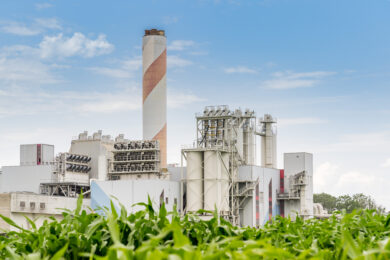
Carbon Capture, Utilization and Storage — The Time is Now
Energy Future Forum
– Linda Coady, Executive Director, Pembina Institute
“It is critical that Canada maintain and advance its leadership position in carbon capture. It must be understood as part of a broader strategy to sustain our comparative advantage as a leading energy-exporting nation and reliable, responsible resource developer. Our commitment to the ongoing reduction of emissions and the attainment of the highest levels of the environment, social and governance standards and performance, must be evidenced in our industry activities. This carbon capture policy initiative points to a serious opportunity for government and industry collaboration.”
– Mac Van Wielingen, Founder and Partner, ARC Financial Corp.
The climate challenge for Canada is clear. We must find the keys to unlocking a future that couples climate action and economic growth. This means combining innovation with our comparative advantage as an energy-exporting nation while achieving or exceeding our climate targets. Canada has what it takes – the knowledge, the ingenuity and the commitment. All we need is the will and policy framework to act together. The time to do that is now. This paper addresses a key link in the value chain towards a clean energy future, one among a number of promising steps the Energy Future Forum will discuss in the coming months.
- If Canada is going to meet its 2030 climate change objectives and establish a plan to achieve net-zero carbon emissions by 2050, carbon capture, utilization and storage (CCUS), including direct air capture (DAC) and other developing technologies, will play an integral role.
- CCUS technology has a proven 90% capture rate of the CO2 produced from the use of fossil fuels in electricity generation and industrial processes. The captured carbon is sequestered underground, either as part of enhanced oil recovery (EOR), or stored in geological formations. It can also be used to produce valuable products such as carbon fibre, and other low or emission-free fuels.
- Carbon capture deployment and redeployment does not relieve oil and gas companies of their need to innovate and reduce emissions. It represents one key component of a multi-faceted decarbonization approach that must include stepped-up energy efficiency programs; the expansion of clean power sources, next generation nuclear, grids and connections; greater use of renewable fuels; deployment of efficient nature-based carbon sinks; absolute reductions in high-carbon emitting production and consumption. Meeting Canada’s Paris targets requires that all members of society become part of the solution.
- Canada took a relatively early position in carbon capture, utilization and storage, developing operational expertise and intellectual property. One of the biggest challenges is the cost of carbon capture, which varies widely based on application. For example, it can range from US$21.50 a tonne for natural gas facilities, to a high of $124 a tonne for cement production. [i] However, as with most emerging technologies, costs can be expected to fall over time to become a commercially viable part of a sustainable oil and gas industry, particularly in the context of a price on carbon and stable credit markets to finance the significant capital costs. It also generates significant exportable opportunities for technologies, services and products.
- CCUS has application to a number of heavy-emitting industries beyond oil and gas, including power generation and concrete, steel and fertilizer production. Incentives should be tied to carbon mitigation not to specific industries, with a mind to generating jobs and competitive advantage out of societal goods.
This document reflects a strong consensus within the Energy Future Forum that any achievable pathway to national climate and economic objectives will include a contribution from carbon capture technologies and from utilization and storage. In any post-COVID, “green stimulus” planning, support for CCUS expansion is even more pivotal than before. As a resource and energy-producing nation committed to emissions reductions goals, Canada’s economic future hinges on these natural assets being part of a low (and eventually net zero) emissions, clean energy strategy. For Canada to lead in CCUS, an industry-civil society-government collaboration will be needed to spur innovation and make investments competitive with those available in the United States and elsewhere. Canada must level the playing field when it comes to such measures as the American 45Q tax credit and use these along with stackable federal and provincial tax credits, carbon pricing and other measures in place or under discussion, such as the draft Canadian Clean Fuel Standard, which can be used to drive market expansion of CCUS policies while reducing carbon intensities. Attention is also required to ensure Canadian industries incorporating CCUS can compete with jurisdictions having lower carbon-reduction standards.
The International Energy Agency forecasts that nine per cent of global emissions reductions by 2050 will come through CCUS. In a May 2020 interview with Bloomberg, IEA executive director Faith Birol called on Canada to step forward in applying CCUS. “I expect Canada to be a leader in carbon capture and storage … CCS could bring a good marriage between oil and gas and reaching our climate targets,” Birol said.[ii]
Carbon capture provides Canada with an opportunity to improve its reputation as a clean oil and gas producer, and take a leadership role in an important aspect of the global climate change effort. It does that in two ways. First, carbon capture helps Canada establish a clean energy brand on the road to our 2030 and 2050 climate objectives. Second, with Canadian companies at the leading edge of carbon capture, utilization and storage technology, it opens the door for Canada to help global climate efforts and strengthen our economy as an exporter of carbon capture technology and knowledge, as well as carbon-competitive resources today, and eventually hydrogen-based energy and carbon-based products. A clear example of the market potential is China, which depends heavily on coal-generated power. According to the Global CCS Institute, China has 18 carbon capture projects in various stages, from early planning through to demonstration projects, to full operation. China is also investing heavily in the development and operation of new coal power plants in other countries, including 23 in neighbouring Vietnam.[iii]
CCUS brings together a value chain consisting of the three separate streams of capture, utilization and storage. When integrated, they are at their most useful in achieving much-needed CO2 reductions, and delivering greater economic value-add from our resources and related technologies. In recent years, Canada became recognized as an early mover in the development and application of carbon capture utilization and storage, in part because of the willingness of the federal, Alberta and Saskatchewan governments to shoulder some of the costs as part of addressing the need to reduce CO2 emissions. For example, in Alberta, the government committed $1.24 billion for two projects through 2025. Unfortunately, that early mover advantage has been diminished as Canada pulled back largely because of cost, while other countries, particularly the U.S., began to provide significant incentives for carbon capture technology. As an oil-producing nation and a signatory to the Paris Agreement, Canada has a golden opportunity to reassert a leadership role.
Carbon Capture Leadership
Three major post-combustion carbon capture projects are already operating in Western Canada. The world’s first commercial scale post-combustion carbon capture facility opened in 2014 at SaskPower’s Boundary Dam thermal unit. It has a carbon capture capacity of almost one million tonnes a year. A second is the Shell Quest plant at its heavy oil upgrader in Alberta, which received $120 million from the federal government and $745 million from the Alberta government and is capturing more than one million tonnes a year of carbon. The third is the Alberta Carbon Trunk Line (ACTL) project, which began full operations in May. It provides the backbone for transmission of CO2 captured from the North West Redwater Sturgeon Refinery, a fertilizer plant and other industrial sources near Edmonton to an oil processing and gas compression facility, which injects it into depleted oil fields deep underground. The ACTL has the capacity to transport 14.6 million tonnes of carbon a year. As well, at its Horizon project, Canadian Natural Resources Limited’s (CNRL) recovery plant is capturing 438,000 tonnes of CO2 annually. Each of these projects proves CCUS technology is available and commercially viable with the right incentives.
CCUS in the oil and gas sector already has several success stories. Given damaged corporate balance sheets and resulting reductions in capital expenditures, industry will be hard-pressed to continue to build the necessary momentum on its own. If Canadian petroleum producers are to be part of the emission solution – as they must, government is going to have to provide some lift, as it did with orphan wells and methane reduction. Such government-industry partnerships in support of CCUS’s role in a cleaner energy future already occur in the United States and Norway. For Canada, they provide an integral component for a low-carbon exporting nation in transition.
Moreover, innovative Canadian companies are showing themselves to be competitive on a global level. Carbon Engineering, based in Squamish, B.C., has attracted worldwide attention for its breakthrough research and development work in direct air carbon capture. Direct air capture (DAC) technology uses a chemical scrubbing process to remove CO2 directly from the air. The objective is to reduce “legacy” emissions – an estimated 750 billion tonnes of CO2 that have been emitted into the atmosphere over hundreds of years. As such, DAC can be pivotal as a way of reducing global CO2 emissions from dispersed emissions sources that are otherwise hard to capture.
As major energy companies step forward and commit to carbon neutrality or zero emissions, direct air capture is gaining acceptance. Shell Canada, Total, and BP Canada’s new targets bind the companies to net zero emissions across its operations by 2050, and include a portion of so-called Scope 3 end-use of its fuels.[iv] Occidental Petroleum Corporation has invested in Carbon Engineering technology to put in place the world’s first large-scale direct air capture plant paired with sequestration in the Permian Basin.[v] British Columbia-based Svante Inc. is another leader in the field. It describes its work as allowing companies to play offense in the fight against climate change. Svante has joined with Husky Energy in an enhanced oil recovery (EOR) project in Saskatchewan and has partnered with others such as Chevron Corporation and Mitsui & Co. (Canada) Ltd. and Total in applying its carbon capture technology on a range of industrial applications.[vi]
Carbon Utilization and Storage Leadership
In terms of carbon utilization, another Canadian company, CarbonCure Technologies of Dartmouth, Nova Scotia, enables concrete producers to re-utilize CO2 right into their products. The use of carbon is a critical asset, as it has significant commercialization potential in the creation of marketable products such as building materials, chemicals and other fuels. Suncor Energy and Mitsui recently joined forces with a U.S. biotech and carbon recycling company in a pilot project to make sustainable aviation fuel. As well, Canada’s Oil Sands Innovation Alliance (COSIA) has put in place a US$20 million Carbon XPRIZE in order to challenge companies to accelerate the development of technologies that convert CO2 into valuable products.[vii]
Clearly, Canada has what it takes to be a world leader by advancing export competitiveness and emissions reduction in all parts of the CCUS value chain, bringing environmental and economic goals in harmony with one another. Unfortunately, a lot of this expertise is being deployed outside of Canada.
Carbon capture is also a critical building block to a future where hydrocarbons are separated into emissions-free hydrogen energy and carbon-based products. Hydrogen generation can be coupled with carbon capture to enable hydrogen supply for fuel cell-based transportation, and even used in the hydrogenation of vegetable oils. Moreover, as the International Energy Agency notes, when used with biofuel production CCUS can help the effort to achieve negative CO2 emissions.[viii] The very carbon density that makes Canada’s bitumen reserves problematic today renders them ideal for advanced manufacturing and materials processes that have the potential to create billions of dollars in additional economic activity. A prime example of the potential of “bitumen beyond combustion” opportunities can be found in carbon fibre, a strong, lightweight material increasingly important for producing lighter vehicles (including electric vehicles) and building materials that store rather than emit carbon in their fabrication.[ix] There is also a critical link between carbon capture and storage and the growth of renewable energy. Recent progress in both the CCS and energy storage fields reveals that technologies such as calcium looping are technically viable and promising options in both cases.[x]
All the factors exist to build a globally competitive cluster, enabling Canada to be an international leader in carbon capture, utilization and storage – doing good for the world and doing well for the Canadian economy and jobs. Our nation is home to world-class energy companies with sophisticated engineering and project management capabilities, internationally recognized expertise in carbon capture utilization and storage, and treaty commitments to achieve aggressive emissions reduction goals. Also, Canada has massive CO2 storage capacity, with geological formations that are considered ideal for long-term storage of carbon not used to produce new value-added products.
Policy Benchmarks
So what’s holding us back? The missing ingredient is a supportive and competitive policy framework, which can help unlock investment that leads to commercial viability. Carbon capture is capital intensive and to date exists in a “one-off” project environment. What’s needed are incentives to attract private capital investment so that carbon capture is recognized and treated as a system-wide approach to emissions reductions. There are national examples to emulate.
One is the United States. Despite the current administration’s notice of withdrawal from the Paris Agreement, the U.S. uses both market mechanisms and tax policy to drive carbon capture and storage outcomes. In addition to low-carbon-fuel standards in some key states, which creates a market demand for low emission sources of fuel, the U.S. has a federal tax credit for both carbon capture and storage and direct air capture. The 45Q tax credit applies to captured carbon that is either geologically sequestered or used as part of enhanced oil recovery. The credit has attracted support from both Republicans who back the fossil fuel industry and environmentally-minded Democrats. The U.S. Department of Energy also offers a loan guarantee program for novel projects, and, coupled with the 45Q credit and state measures, private sector financing is now flowing into carbon capture and storage projects. The stacking of federal and state tax measures has created a powerful incentive for investment. There are currently 10 carbon capture and storage facilities in the U.S., with an annual total carbon capture capacity of 25 million tonnes. Congress is also considering an extension of the tax credit.[xi]
Another example is Norway. In 2018, the Norwegian government initiated a full-scale carbon capture and storage (CCS) initiative as part of its two-part strategy to be recognized as a producer and exporter of clean oil and gas while addressing climate change. Norway has three CCS projects operating in offshore oil platforms, the only offshore CCS facilities in Europe. The CCS projects are funded through CLIMIT, a national program in support of CCS research, development and application.
Canada has an opportunity to step up as an innovator and an exporter of expertise on the way to reducing its GHG emissions. In 2008, the Canada-Alberta Carbon Capture and Storage Task Force proposed a joint policy framework that was never implemented. It’s time for a similar collaborative federal-provincial initiative. Since 2011, Canada has also been part of the 26-nation Clean Energy Ministerial that promotes clean energy technology and supports CCUS. At its 2018 meeting in Copenhagen, the global ministerial group committed to “enhancing deployment of carbon capture, utilization and storage solutions.” It’s time for Canada to put those words into action. With the right kind of policy commitment, Canada can claim an international leadership position as part of an effort to become one of the world’s cleanest producers and exporters of oil and gas, and a partner in helping address global emissions beyond our borders through the export of CCUS and DAC technology and clean energy. Carbon capture provides an indispensable part of such a low-carbon future.
To proceed requires:
- Clear signals from the federal and provincial governments that carbon capture and direct air carbon capture, utilization and storage are integral components of our climate change policy framework and a low-carbon export strategy;
- Federal tax policy in the next budget that combined with climate change policies meets or exceeds the U.S. measures such as 45Q and as a result, will attract private sector investment in both carbon capture and direct air capture, utilization and storage. Currently, we are not incenting Canadian companies with the know-how to invest here. As a result, they go abroad to find opportunities, and in the process fail to optimize our emissions reductions;
- Federal and provincial governments working together to establish stackable tax credits and the creation of a CCUS fund that will help leverage private sector investment into the three streams of carbon capture;
- Canada Infrastructure Bank standards that reward carbon reduction strategies, including carbon capture and storage, in the allocation of capital;
- Federal and provincial governments working together to build on existing expertise to implement a strong regulatory framework to minimize the risk of leaks, monitor movement of the carbon dioxide (CO2) and address outstanding issues such as the ownership of pore space and long-term liability of carbon storage;
- Creation of financing vehicles, such as “green” transition bonds, public-private partnerships and equity investments by the federal and provincial governments, and the Canadian Infrastructure Bank, to help attract private investment into the CCUS sector.
The Energy Future Forum urges the federal government, as part of its Paris undertakings, to build on its carbon pricing policies and take the lead in working with carbon-intensive industries and provincial governments in putting this agenda into action. Levelling the playing field through a 45Q tax credit equivalent is a good place to start both in furthering climate targets and a low-carbon export economy.
Endorsement
This position paper on carbon capture utilization and storage comes from the Energy Future Forum, a pan-Canadian grouping of organizations and individuals in business and government, along with academic, environmental and Indigenous organizations, working to address climate action and our energy future around one table. The foundational partners – RBC, Suncor Energy, Hydro-Quebec and the Ivey Foundation, together with PPF – are determined to see this collaborative effort map out an ambitious set of actions that are environmentally sound, economically beneficial and publicly acceptable.
The mission of the Energy Future Forum is “to develop practical measures that help Canada meet or exceed our 2030 emissions targets on the way to a net zero future, and that strengthen an innovative economy, deepen shared prosperity and enhance national unity.”
The following members have endorsed this position paper. An endorsement represents a supportive position given by an EFF member to the policy position(s) presented in this CCUS paper.
| Canadian LNG Alliance
Canadian Natural Resources Limited Cenovus Energy CIBC Clean Prosperity Ed Whittingham Enbridge Evok Innovations EY Canada GE Canada |
Husky Energy
Imperial Oil Ivey Foundation Mac Van Wielingen, Founder and Chairman, Viewpoint Group; Founder and Partner, ARC Financial Corporation MEG Energy Michelle Adams, Director, School for Resource and Environmental Studies, Dalhousie University Nuclear Innovation Institute Pembina Institute Peter Tertzakian, Deputy Director of the ARC Energy Research Institute Petronas Energy Canada Limited |
RBC
Shell Canada Suncor Energy Sustainable Development Technology Canada TC Energy Corporation Toronto Region Board of Trade Total E&P Canada Waterloo Institute for Sustainable Energy, University of Waterloo |





